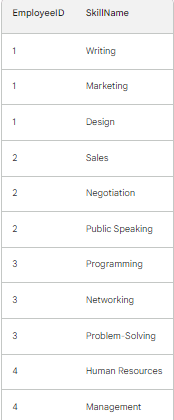Introduction:
Hey there! Ready to explore the world of databases? We're starting with a cool topic: normalization. Today, we're talking about the First Normal Form (1NF). It might sound fancy, but don't worry, we'll break it down into easy bits. Let's dive in!
Scenario 1:
Imagine you're building a library database to keep track of books. At first, you might think, "Let's put everything about a book in one place—title, author, genre, and if it's available." Sounds good, right? But as your library grows, things get messy.
Enter the First Normal Form:
So, what's this 1NF thing? It's like the hero that saves your data from being a mess. It tackles two main problems: too much repeated info (we call it redundancy), and making sure each piece of info is simple and clear (that's atomicity).
Let's take note of the following key terms:
Redundancy: This is when you have the same info in different spots. 1NF helps us get rid of this mess and keeps things neat.
Atomicity: Fancy word, simple idea. It means each column (like title or author) should have just one type of info. And every piece of info should be simple, not a mix of things.
Putting it into Action:
Let's make our library database! We'll use two tables – one for authors and another for books.
-- Table: authors
CREATE TABLE authors (
author_id INT PRIMARY KEY,
author_name VARCHAR(255) NOT NULL
);
-- Table: books
CREATE TABLE books (
book_id INT PRIMARY KEY,
title VARCHAR(255) NOT NULL,
genre VARCHAR(50),
availability BOOLEAN,
author_id INT,
FOREIGN KEY (author_id) REFERENCES authors(author_id)
);
This code creates two tables. One for authors, keeping things like their ID and name. The other is for books, linking back to the authors. Easy, right?
Scenario 2:
Consider the mock database below:

This table structure violates 1NF because the 'Skills' attribute is multivalued. This means that a single employee can have multiple skills.
Implementing 1NF:
To transform the mock database into 1NF, we need to address the multivalued attribute in the 'Skills' column. We can create a separate table named 'EmployeeSkills', with the following structure:
This new table establishes a many-to-many relationship between the 'Employees' and 'EmployeeSkills' tables, ensuring that each employee is associated with a unique set of skills.
Conclusion:
Great job! You've just conquered the basics of the First Normal Form. This simple rule helps us make databases that are organized, grow-friendly, and easy to understand. Stick around for more fun database stuff in our next chat!







Top comments (0)